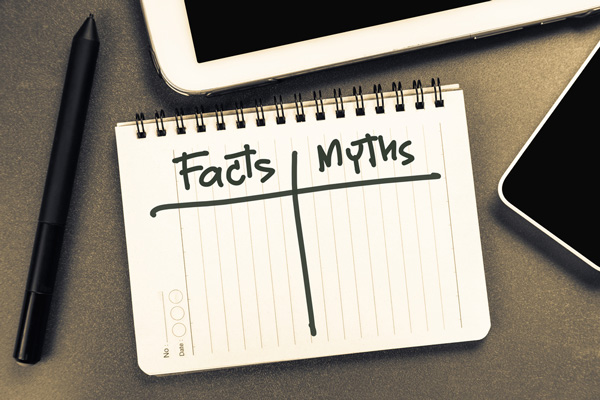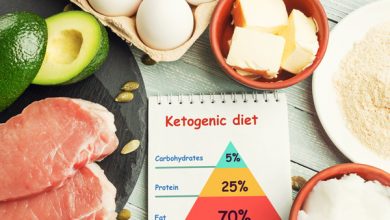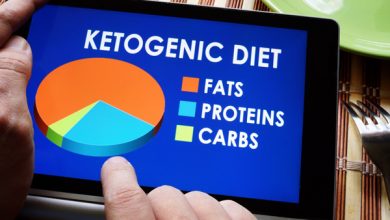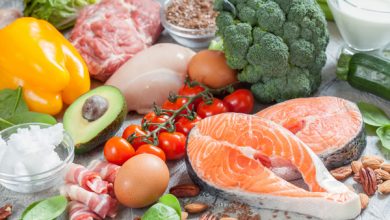Keto 101
Is Being In Ketosis Dangerous? Myth busting Arguments

Truthfully, we can’t say for certain that it is 100% safe. But nothing in this life is 100% safe anyway. Medicine doesn’t understand everything about nutritional science and won’t for a long time.
Do your own research and come to your own conclusions. This article organizes many of the issues pertaining to the safety of ketosis so that you can make your own decision.
There are two methods of proving something is safe:
- Disprove the danger
- Show evidence connected with safety
This article will address and dispel the top 9 claims people use that allege ketosis is dangerous.
This information is sourced from reputable doctors or authors with years of experience with the diet.
1 Claim: the brain is fueled by glucose and a Keto Diet doesn’t give you the glucose to run it.
Reality: The brain does need glucose but not much (about 30g-50g/day) The body can synthesize this amount from protein it has consumed in a process called gluconeogenesis. No carbohydrates are needed.
What will the brain use daily to meet the rest of its energy needs? You probably know your brain is fueled by glucose. But, did you know it can also run on ketones? In fact, ketones are like natural gas to a vehicle a cleaner more efficient fuel that burns with less waste.
When your body is completely Keto-adapted, your brain gets up to 75% of its fuel for energy from ketones. The rest comes from the aforementioned protein synthesized glucose. Therefore, unlike proteins and fats, people can survive and thrive without eating carbohydrates.
A high fat/very low carb diet is called a traditional Inuit diet. Following it, your brain eventually burns fat-derived ketones for about 50-75% of its energy requirements. Your liver manufacturers most ketones, but the brain’s astrocytes also generate ketones for neuron’s use. Does it make any sense to have that ability in your brain if ketones aren’t meant to be used? If we could only burn glucose, why would those ketone factories exist in our brains?
- Claim: the Keto Diet is nutrient deficient and dangerous.
Reality: If followed correctly, the Keto diet is a complete and nutritious diet. The Keto diet is practiced in many different ways. All it takes to achieve ketosis is to cut out carbs and control protein to deplete your glycogen reserves so ketosis kicks in. If you achieve that by eating buttered hot dogs then you are on a dangerous nutrient-deficient diet. Like most things in life, there’s a safe healthy way and a way that threatens your health. A complete, nutrient-dense Keto diet consists of fatty cuts of quality meat, dairy, nuts and plenty of green leaves and fibrous vegetables.
As a matter of fact, most following a Keto diet wind up eating more servings of nutritious low carb vegetables than before. Without candy, chips, and soda, nutritious alternatives (tomatoes, avocados, olives, spinach and broccoli) become more attractive.
Unlike proteins and fats, there is no essential carbohydrate; that’s not the case with proteins and fats. Fats and proteins can give you everything you would get from carbohydrates.
- Claim: Ketosis can develop into life-threatening Ketoacidosis
Reality: It is physiologically impossible for someone with a normally functioning pancreas to develop Ketoacidosis.
You have no risk of developing ketoacidosis unless your pancreas cannot make insulin (type I diabetics have to be careful with ketosis).
When diabetics (usually Type1) don’t get enough insulin, they go into a state of starvation. It doesn’t matter how much glucose is in their bloodstream, their cells can’t absorb it without insulin. They are starving.
- Claim: Ketosis can cause dehydration and electrolyte deficiency
Reality: Ketosis does promote water and electrolyte loss but drinking enough water and consuming electrolyte-rich foods (sodium, potassium, and magnesium) balances things out.
A ketogenic low-carb diet is a water-flushing diet. The diet reduces inflammation, which encourages water retention and uses up glycogen stores (glycogen also retains water) in your liver and muscles.
This diet doesn’t cause you to retain water, so you will be urinating quite frequently (perhaps more than once per hour when you start). As a result, you’re going to need to replenish the electrolytes you will be eliminating.
This brings us to the end of the first of the 2 articles. You can see most of the negative arguments are based on misinformation and/or misconceptions about the actual effects of ketosis. You can use this information to counter any negative comments you might receive from your family and friends about adopting the Keto Diet.
- Claim: a Keto diet boosts cholesterol and increases heart disease risk
Reality: Claims that your diet has any effect on cholesterol levels are being disproved by research. Further, new research has discovered total cholesterol levels have little to do with cardiovascular disease. Diet does affect triglyceride levels but doesn’t not total cholesterol levels. The amount above normal of your triglyceride levels reflects your LDL particle count and represents a greater risk of heart disease.
The notion that cholesterol is “bad” is as big a misconception as the idea that eating fat makes you fat. Your eyes’ health depends on cholesterol. Despite traditional medicine’s propaganda, cholesterol has little to do with cholesterol levels in your body.
High levels of triglycerides in your blood are a risk factor for heart disease and are directly linked to the number of simple carbohydrates consumed. It makes sense that low-carb diets reduce triglycerides, while low-fat diets should increase them. (gasp!)
- Claim: the Keto Diet lacks fiber and causes constipation
Reality: When followed correctly, a Keto diet is actually very high in fiber.
If you’re just gonna eat hot dogs, cheese, and margarine, then surely these bring on constipation and a bunch of other problems. You can’t eat processed, low quality food on any diet and expect to hold on to good health.
Many Keto’ers say they end up eating far more vegetables and fiber than on the standard American diet. Your taste buds wake up again once you eliminate the carbs and the sugar overload wears off. Vegetables like tomatoes, peppers, and cucumbers begin to taste flavorful and sweet. You get your carbohydrate fix (about 20-50g/day) from vegetables.
Many don’t realize there’s a difference between infrequent bowel movements and constipation. Constipation is characterized by discomfort and the feeling there’s waste in your colon but, it’s not moving. Being stopped up isn’t the same as not going.
You won’t go if there’s little waste inside to eliminate. On Keto, you’re going to have fewer bowel movements. Your body efficiently extracts nutrients from fatty foods and meats leaving fewer waste products. In other words, don’t confuse fewer bowel movements and constipation.
- Claim: the Keto Diet causes muscles to waste away
Reality: No research findings support the claim that a low-carb diet causes muscle loss. Based on the anecdotal evidence the opposite may be true. The ketogenic lifestyle is gaining a reputation as an effective bodybuilding diet.
The muscle wasting argument can be traced to the same misunderstanding of the brain’s glucose requirements we discussed earlier. The brain would need far more glucose to function properly than it does now without the availability of ketones.
Lacking ketones, your brain would have to break down protein to obtain the necessary glucose on a low carb diet. It would source the glucose from protein-rich foods or if that wasn’t an option, it would cannibalize body muscle. This is unnecessary since during ketosis your brain can fill 70-75% of its energy requirements from ketones. Dietary protein easily provides the remaining fraction and your body’s muscle is saved.
- Claim: Ketosis damages the kidneys and causes kidney stones to form
Reality: This claim is based on another misconception that the Keto diet is high in protein. Protein on the Keto diet is limited in order to stop the synthesis of sugar from protein. There’s no evidence that eating a large amount of protein causes kidney damage and stones to form. Protein seems to make a history of kidney stones and pre-existing kidney issues worse.
- Claim: high-fat consumption on a Keto Diet causes gallstones
Reality: Gallstones result from an inactive gallbladder. Eating fat increases gallbladder activity.
An active gallbladder constantly cleans itself out and replenishes its contents. An inactive one sits idle and forms stones. In a study of 51 obese people on a very low fat/ low-calorie diet (a single gram of fat a day), their gallbladders were examined by ultrasound before adopting the diet and month 1 and month 2.
Four out of the 51 participants developed new gallstones after one month. Two months in over 1 in 4 (13 people) formed new gallstones! On this nearly fat-free diet, 3 patients had their gallbladders removed during the study.
A similar study compared an extremely low-fat diet to a slightly higher fat diet for 3 months. More than 50% (6 of 11 people) in the extremely low fat group developed new gallstones. None on the slightly higher fat diet did.
You can see most of the negative arguments are based on misinformation and/or misconceptions about the actual effects of ketosis. You can use this information to counter any negative comments you might receive from your family and friends about adopting the Keto Diet.




